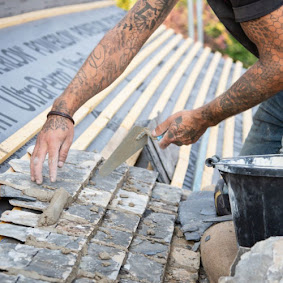Heritage Construction and Roofing: History, Technique, Preservation, Future
Heritage construction and roofing refers to the specialized field of building and maintaining structures that possess historical, cultural, or architectural significance. These projects often require a blend of traditional craftsmanship and modern techniques to preserve the integrity and authenticity of the original design while meeting contemporary standards of safety and functionality.
Historical Significance and Challenges
Heritage construction projects involve buildings or sites that hold historical value, representing a specific period, style, or cultural heritage. These structures may include ancient monuments, historic houses, religious buildings, or even entire districts designated for preservation. Preserving these sites requires extensive knowledge of architectural history, materials, and techniques used during their respective periods.
Challenges in heritage construction and roofing arise due to the need to balance preservation with modern requirements such as structural integrity, accessibility, and environmental sustainability. Preservationists often face the dilemma of maintaining authenticity while ensuring safety and usability for current and future generations.
Techniques and Materials
One of the distinguishing features of heritage construction and roofing is the use of traditional materials and techniques. This may involve sourcing materials such as locally quarried stone, handmade bricks, or specific types of timber that match the original construction methods. Craftsmen skilled in traditional carpentry, masonry, and roofing techniques are essential for executing these projects authentically.
Restoration or repair work typically begins with a thorough assessment of the structure's current condition and historical research to determine the original design and materials used. Advanced imaging technologies like ground-penetrating radar or 3D scanning can aid in uncovering hidden details without damaging the structure.
Preservation Standards and Regulations
Governments and heritage organizations often establish preservation standards and regulations to guide restoration and maintenance efforts. These standards ensure that any work done on heritage structures respects their historical significance and architectural integrity. Preservationists must navigate these guidelines to obtain necessary permits and approvals before commencing work.
Adherence to conservation ethics, such as minimal intervention and reversibility of changes, is crucial in heritage construction. Techniques like lime mortar repointing, which allows structures to breathe and prevents moisture damage, exemplify the emphasis on preserving original materials and techniques.
Case Studies and Examples
Several notable examples illustrate the complexities and successes of heritage construction and roofing:
The Colosseum, Rome: Ongoing efforts to preserve this iconic amphitheater include consolidating ancient masonry and managing visitor impact while maintaining its structural stability.
Taj Mahal, India: Restoration projects focus on combating marble discoloration due to pollution and stabilizing the wooden foundations beneath the mausoleum.
Traditional Japanese Temples: Wooden structures like the Horyu-ji temple complex in Nara prefecture require specialized carpentry techniques to maintain their structural integrity against earthquakes and natural wear.
Sustainability and Future Challenges
In recent years, sustainability has become increasingly important in heritage construction and roofing. Preservation projects now incorporate energy-efficient technologies, sustainable materials, and methods that reduce environmental impact without compromising historical authenticity.
Future challenges include adapting heritage structures to climate change and developing innovative solutions for preserving structures at risk from natural disasters or urban development pressures. Collaborative efforts between preservationists, architects, engineers, and local communities will be essential in tackling these challenges while ensuring the continued preservation of our cultural heritage.
Conclusion
Heritage construction and roofing represent a unique blend of artistry, historical preservation, and technical expertise. By safeguarding our cultural treasures, we not only honor the past but also enrich the future by providing opportunities for education, tourism, and community pride. As technology and conservation practices evolve, the field of heritage construction will continue to play a vital role in shaping how we preserve and celebrate our shared architectural legacy for generations to come.



Comments
Post a Comment